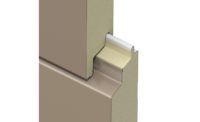The quest to improve building performance gets more complex as it expands its reach. For example, the need for better roof and wall insulation levels sparked changes to theASHRAE 90.1-2007 Energy Standard for Buildings Except Low-Rise Residential Buildings.
The quest to improve building performance gets more complex as it expands its reach. For example, the need for better roof and wall insulation levels sparked changes to the ASHRAE 90.1-2007 Energy Standard for Buildings Except Low-Rise Residential Buildings. This change is designed to increase energy efficiency by as much as 30 percent over the levels outlined in the 2004 edition of the 90.1 standard. Changes in the minimum insulating values were applied in Addendum “g” to the 2007 ASHRAE 90.1 standard.
The Easy Solution
The new standard increases insulation values across all seven climate zones within the United States.
According to Scott Kriner, technical director for the Metal Construction Association, the increased stringency of insulating values, especially in the colder climate zones will create a significant market opportunity for insulated metal panels (IMPs) to be used on buildings in those areas. “ASHRAE is requiring a base insulation material as well as a rigid insulation board in those climate zones to meet the new insulating standard. In those cases, a building owner may select a readily available thicker IMP panel to provide the required U-value in ASHRAE 90.1 rather than specify the more complex conventional wall insulating practices and materials,” Kriner said.
An IMP is a single unit constructed of a rigid polyurethane foam core sandwiched between two sheets of coated metal that provides a strong and thermally efficient building enclosure. The metal panel facings are designed to resist damage and create a vapor and moisture barrier, which offers long-term thermal stability.
More information about IMP systems is available atwww.metalconstruction.org/imp.
Get our new eMagazine delivered to your inbox every month.
Stay in the know on the latest in the wall and ceiling industry.
SUBSCRIBE NOWCopyright ©2024. All Rights Reserved BNP Media.
Design, CMS, Hosting & Web Development :: ePublishing




Report Abusive Comment